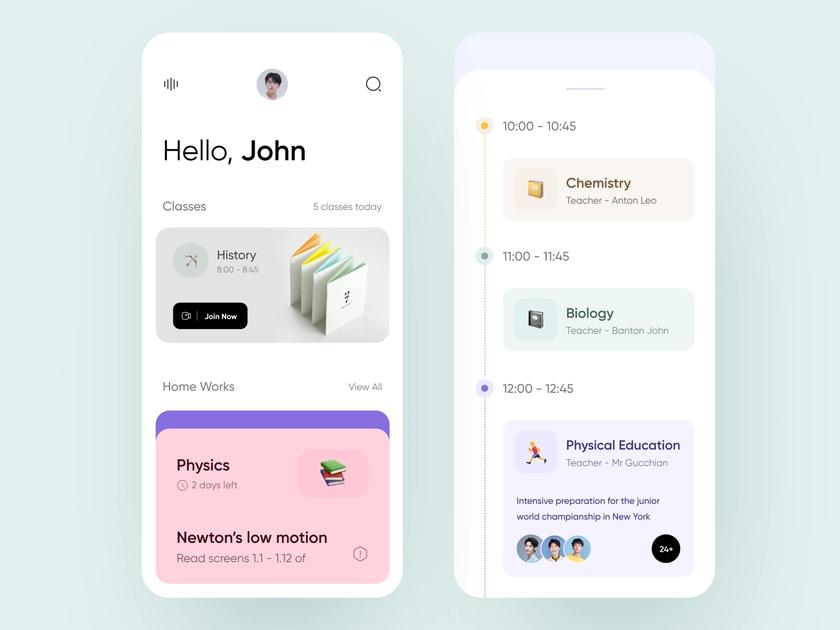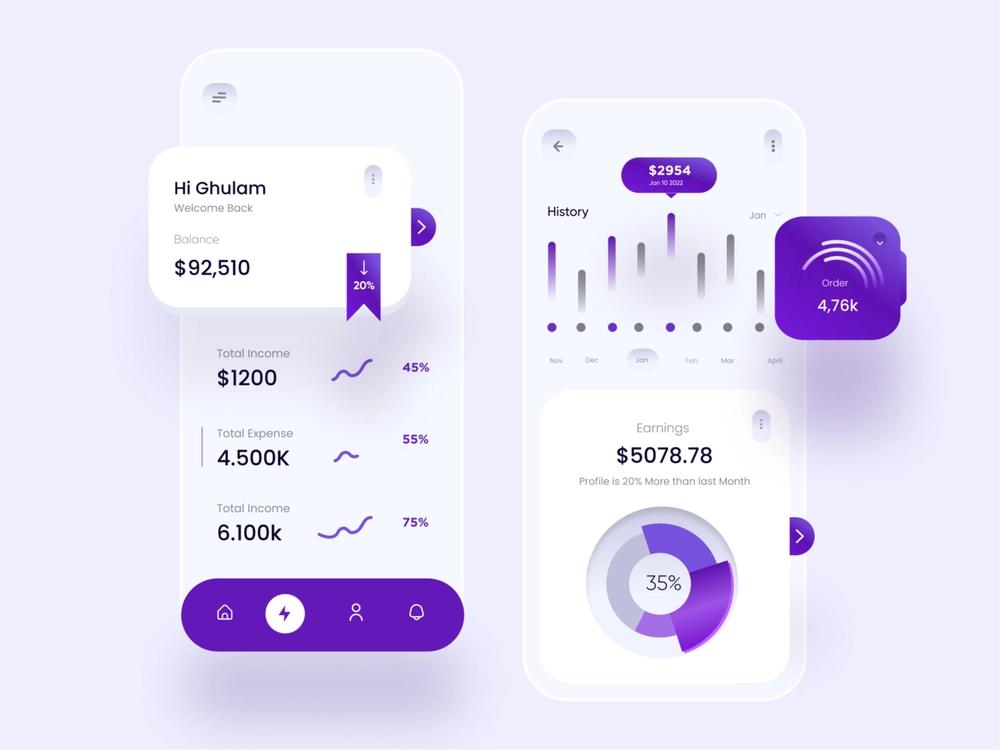How We at Stormotion Maintain Products After Release
Published: July 8, 2022
7 min read
In this article, you'll learn:
1
📲 Product Release: What it Actually Means
2
💼 Post-Release Consulting & Our Expertise
3
💡 Takeaways
The development process includes a lot of stages like pre-project planning, UX prototyping, executing, release and post-release maintenance, etc. Each of these stages implies completing dozens of steps from risk assessment to setting up reporting channels and quality assurance processes.
To learn more about how we establish Project Management for each project individually, you can take a look at this article. Here, we talk about each stage in detail and share some insights from our skillful Project Manager.
But what happens after the product is finally released? The development process is a constant improvement and correction work after all.
This is where clients start talking about post-release maintenance with their Tech Partners. This is a stage that doesn't have any regular time frames — as long as the app is on the market, it needs technical maintenance in one way or another.
In this article, we’ll talk about what exactly a product release can mean and what steps it typically includes. Additionally, we’ll cover what other post-release services Development Agencies can provide you and share our expertise.
Before we start, we’d like to mention that the information we use is based on Stormotion’s practice and expertise but we’ll generalize the approaches so you can get a broader understanding of the topic.
Welcome! 🚀
\
📲 Product Release: What it Actually Means
One of the most important things to understand about the release is that it’s not a single event that happens once the development is completed. On the contrary, it’s most often a recurring process of delivering different product versions to the market to introduce new features, validate hypotheses, and improve user experience.

The product release can mean different things (image by Glow)
In case the client wants to develop the application further, release becomes a recurring checkpoint within a PDCA cycle rather than a single huge update. The changes can be minor and regular. It’s quite common for companies who have reasonable budget distribution and a long-term perspective of their application.
Oftentimes, one of the biggest checkpoints in software development is delivering a Minimum Viable Product (MVP). After the MVP release, companies normally get a much better understanding of clients’ pain points, prepare a post-release roadmap, or even hit a Product-Market Fit.
An MVP is clearly defining the set of features you’d like to implement in the upcoming development stages after validating the business idea. We have an article dedicated to prioritizing features implementation after the MVP release in case you’d like to deepen your understanding of what the next steps can be:
Sometimes, companies don’t get to the point of product release and have to stop the development (temporarily or even permanently). The reasons might be highly diverse:
- Lack of funding.
- Disagreements with inventors or co-founders.
- Reprioritization processes.
- Business model setback & others.
In such cases, we typically complete the development up to the point when there’s a coherent version of the code, finish up merge requests (merging several code branches), and create the documentation so the development can be more easily renewed anytime from that point.
This is called “freezing” a project. It might be needed at any development stage depending on the reason and company needs.
Surely, the release can also be a major product update with a bunch of new functionality — it’s not a rare case. However, the bigger the scope of the release is, the more time you and your Tech Partner would have to spend on fixing technical debt and performing maintenance work.
Now, let’s move to the exact steps that we generally follow when maintaining the application after release. Additionally, we’ll share the details of one of the post-release projects we’ve worked on.
🔄 Post-Release Maintenance Cycle & Our Expertise
Regular post-release maintenance is sort of a cycle with repetitive steps:
- The release of a product version.
- The client collects user feedback.
- Based on the feedback, we formalize new requirements to create a backlog.
- Once there’s enough to improve, we perform development iteration.
- Repeat the same starting from step #1.

Cover image by Ramy Wafaa{target=_blank rel="nofollow noopener"}}
Of course, if there’s an urgent request like third-party SDK issues, we immediately start working on the solution. When it comes to routine bugs and crashes, we proactively fix them. To detect the issues, we use analytics tools like Sentry or Firebase Crashlytics.
In case it’s something you’d like to learn more about, feel free to follow the link to the article where we talk about integrating analytics tools into your application:
Also, there’s a whole separate post-release maintenance branch — handling technical debt. In principle, it’s a code “weakness” that occurs when releasing the product or as a result of prioritizing Time-to-Market reduction over code perfection. Normally, it’s not something crucial for the app’s functioning but it can significantly decrease the app’s performance and take up server space.
Even if the app is perfectly built, the technologies gradually get old as new versions of tools, libraries, and frameworks get released. As a rule of thumb, companies should handle technical debt once every 3 months or by necessity.
We have a piece dedicated to handling technical debt where we talk about it using a bunch of examples and exact steps to handling them:
Stormotion’s Expertise
Once a client reached out to us with an already existing application. It was based on WebView, which is a system component that allows displaying content from the web browser directly in the application.
This useful tool has its drawbacks: one of them is poor User Experience (UX) design. The company wanted us to partially rebuild the application so it has native functions.

Stormotion's expertise in post-release maintenance (image by Ghulam Rasool 🚀)
We needed a couple of sprints to implement all the required features and released the updated version. After the release, we agreed on performing post-release maintenance, which included tracking and fixing crashes.
For that matter, we connected to the client’s Firebase Crashlytics account. The main goal was to increase the number of crash-free users. We were able to reach the point where 99,5% of users stopped experiencing unexpected exits.
As in our case, post-release maintenance can be provided by a Tech Partner different from the one that was helping you with the development itself. For this matter, it’s important to have the development documentation properly written.
💼 Post-Release Consulting & Our Expertise
Another post-release service we as software developers provide is consulting. The idea is that after the more or less finalized version of the application is released or the project is closed, people reach out to us to ask questions about future product ideas.
In such cases, we normally provide free-of-charge consultations and help companies plan out the post-release maintenance. It can also include help with more time-consuming tasks like creating documentation but such type of work is out of the free consultation scope.

Maintenance after the product release can also include consulting on future development & modification options (image by Nick Velichkin)
Stormotion’s Expertise
One of many cases of post-release consulting we’ve worked on is when a client reached out to us with the request of moving the application from the B2B to the B2C sector and finance the transition through Venture Capital.
We analyzed their ideas, determined the main bottleneck that can block further idea validation from the side of funding providers, and consulted them on future budgeting. We also provided information on effort distribution by identifying the least problematic and most time-consuming aspects of the transition.
The main concept of the application is communication between a student and a couch. And the problem was that having the student acquisition process all set and ready, the client didn’t include the channels of finding enough coaches to meet the rising demand. It was a huge issue for app upscaling.
So, we suggested the new mechanic of coach acquisition and provided a rough budget estimation for it. Once the client is ready, we’ll create a technical roadmap for them so they can use it to find funding.
💡 Takeaways
To sum it all up, post-release maintenance is something you’ll most likely need. And depending on your business needs, it will imply different steps as well.
Let’s briefly summarize what the main use cases for post-release maintenance are:
- Large-scale application update.
- Small changes in the app’s functionality or UI design.
- Technical debt coverage.
- Crashes tracking and fixing.
- Adjusting the application to changes in user/market needs.
- Consulting.
If you need any help with post-release maintenance, free consulting, or want to build an application, feel free to reach out to us. We’d be happy to help you! 🤖
Was it helpful?
Read also

How to Create a Fitness App: Process, Costs, Estimates and Challenges

What is Prototyping in IoT and Some Practical Advice

What is IoT Device Management?
Our clients say
![Stormotion client David Lesser, CEO from [object Object]](/static/93e047dadd367691c604d8ffd1f54b58/b0e74/david.png)
They were a delight to work with. And they delivered the product we wanted. Stormotion fostered an enjoyable work atmosphere and focused on delivering a bug-free solution.
David Lesser, CEO
Numina

